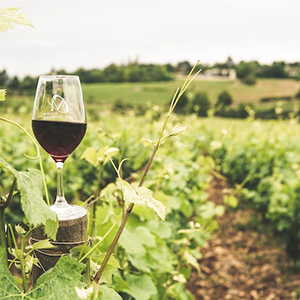Analysis of the main physical and chemical characteristics of the vine shoots of three vine varieties from Veneto (Italy)

Published:15 September 2022
Abstract Views: 1266
PDF: 419
Publisher's note
All claims expressed in this article are solely those of the authors and do not necessarily represent those of their affiliated organizations, or those of the publisher, the editors and the reviewers. Any product that may be evaluated in this article or claim that may be made by its manufacturer is not guaranteed or endorsed by the publisher.
All claims expressed in this article are solely those of the authors and do not necessarily represent those of their affiliated organizations, or those of the publisher, the editors and the reviewers. Any product that may be evaluated in this article or claim that may be made by its manufacturer is not guaranteed or endorsed by the publisher.
Similar Articles
- Michela Zanetti, Benoît Brandelet, Diletta Marini, Andrea Sgarbossa, Chiara Giorio, Denis Badocco, Andrea Tapparo, Stefano Grigolato, Caroline Rogaume, Yann Rogaume, Raffaele Cavalli, Vineyard pruning residues pellets for use in domestic appliances: a quality assessment according to the EN ISO 17225 , Journal of Agricultural Engineering: Vol. 48 No. 2 (2017)
- Daniele Duca, Giuseppe Toscano, Andrea Pizzi, Giorgio Rossini, Sara Fabrizi, Giulia Lucesoli, Andrea Servili, Valeria Mancini, Gianfranco Romanazzi, Chiara Mengarelli, Evaluation of the characteristics of vineyard pruning residues for energy applications: effect of different copper-based treatments , Journal of Agricultural Engineering: Vol. 47 No. 1 (2016)
- Marco Grella, Marco Manzone, Fabrizio Gioelli, Paolo Balsari, Harvesting orchard pruning residues in southern Piedmont: a first evaluation of biomass production and harvest loss , Journal of Agricultural Engineering: Vol. 44 No. 3 (2013)
- Marco Fiala, Jacopo Bacenetti, Model for the economic, energy and environmental evaluation in biomass productions , Journal of Agricultural Engineering: Vol. 43 No. 1 (2012)
- Francesco Barreca, Giuseppe Modica, Salvatore Di Fazio, Viviana Tirella, Raimondo Tripodi, Carmelo Riccardo Fichera, Improving building energy modelling by applying advanced 3D surveying techniques on agri-food facilities , Journal of Agricultural Engineering: Vol. 48 No. 4 (2017)
- Andrea De Montis, Amedeo Ganciu, Fabio Recanatesi, Antonio Ledda, Vittorio Serra, Mario Barra, Stefano De Montis, The scientific production of Italian agricultural engineers: a bibliometric network analysis concerning the scientific sector AGR/10 Rural buildings and agro-forestry territory , Journal of Agricultural Engineering: Vol. 48 No. s1 (2017): Special Issue
- Alvaro Marucci, Adolfo Gusman, Barbara Pagniello, Andrea Cappuccini, Limits and prospects of photovoltaic covers in Mediterranean greenhouses , Journal of Agricultural Engineering: Vol. 44 No. 1 (2013)
- Jacopo Bacenetti, Sara González-García, Aira Mena, Marco Fiala, Life cycle assessment: an application to poplar for energy cultivated in Italy , Journal of Agricultural Engineering: Vol. 43 No. 2 (2012)
- Alberto Cadei, Omar Mologni, Luca Marchi, Francesco Sforza, Dominik Röser, Raffaele Cavalli, Stefano Grigolato, Energy efficiency of a hybrid cable yarding system: A case study in the North-Eastern Italian Alps under real working conditions , Journal of Agricultural Engineering: Vol. 52 No. 3 (2021)
- Francesco Barreca, Pasquale Praticò, Giuseppe Davide Cardinali, A low-energy storage container for food and agriculture products , Journal of Agricultural Engineering: Vol. 52 No. 3 (2021)
You may also start an advanced similarity search for this article.

 https://doi.org/10.4081/jae.2022.1396
https://doi.org/10.4081/jae.2022.1396 






